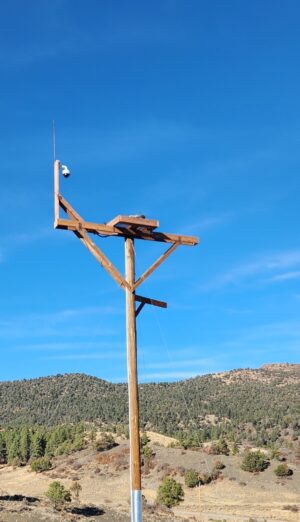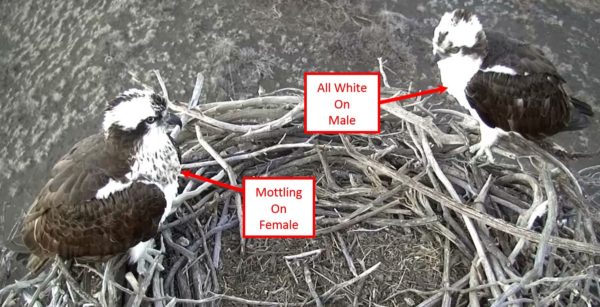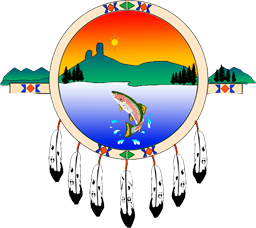The camera is being serviced, please try again later.
Key Osprey Data
| 2024 | 2023 | 2022 | 2021* | 2020 | |
|---|---|---|---|---|---|
| First Detection at Nest | April 1 | March 31 | April 1 | March 28 | March 29 |
| First Egg Lay | April 28 | April 26 | April 26 | April 28 | May 6 |
| First Egg Hatch | June 6 | June 3 | June 5 | June 12 | |
| Approx. Incubation Time | 39 days | 38 days | 38 days | 37 days | |
| Leg-Banding | July 14 | July 15 | - | ||
| Blue Band Numbers | 17C, 18C | 16C | - | ||
| First Fledgling from Nest | August 4 | August 1 | August 5 | ||
| Number of Eggs/Chicks Lost | 1 (egg) | 3 | 2 | 0 | |
| Number of Chicks Fledged | 0 | 1 | 2 |
The Lake Capote Osprey Nest

For the past ten years, a pair of ospreys has made its seasonal home at the Southern Ute Tribe’s Lake Capote, and given visitors spectacular displays of nesting, fishing, and fledgling young. Beginning in 2017, viewers should get a much more close-up view of the birds’ activities, via a webcam installed at their nest.
The birds have arrived in March of each year, after migrating from their winter homes in Central America or South America. Over the course of the spring and summer, the ospreys work on nest construction, lay eggs, raise young, and of course catch a lot of fish. Learn more about ospreys at All About Birds Osprey Page.
Identifying the Male vs. Female

The Webcam
Division staff installed an AXIS P-5515-E network camera in February 2017. A mounting system was attached to the nest pole, which includes a lightning rod to divert any strikes away from the camera and the nest. An aerial lift was used to safely reach the top of the pole.
The division worked with View Into The Blue, a Boulder-based company specializing in outdoor webcams, to design the webcam and livestreaming system. The high-definition 1080p camera has pan, tilt, and zoom capabilities – allowing it to capture not just what’s happening on the nest, but also video of the lake or Chimney Rock for example. The camera data is transmitted wirelessly from the webcam to a communications tower near the campground.
Acknowledgements
The Southern Ute Wildlife Division would like to thank the following for their assistance and support of this project:

